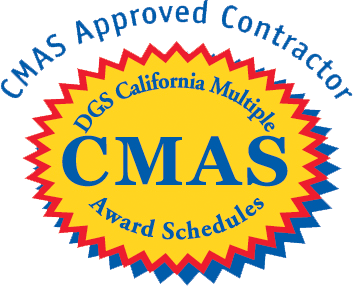Hybrid classroom AV Azusa hybrid learning environment benefits are many. Ensuring that students and teachers remain connected is crucial as education adapts to various learning environments. AV integration, which involves audio and video technology, is vital in all scenarios, whether your academic institution provides remote learning, virtual classrooms, hybrid classes, or distance learning. While instructors and students are undoubtedly crucial, seamlessly integrating audio and video technology is essential for any technology-driven teaching option to work effectively from any location. AV integration enhances the learning experience by providing clear audio, high-quality video, and interactive tools that foster engagement and collaboration.
With technology integration, we can create engaging learning opportunities. For example, interactive hybrid classroom designs could include interactive displays that allow students to interact with the content, cameras that capture both the instructor and the classroom environment, and audio solutions that ensure clear communication. These hybrid classrooms generally support the best learning outcomes when presenting a consistent, engaging on-campus experience for in-person and virtual students. Video conferencing integrations and classroom collaboration tools partner well with Google Classroom, Microsoft Teams, Zoom, and other platforms.
Our higher education AV expertise includes system integration design and customization. This involves designing and customizing AV systems to meet your institution’s needs. But that is not all. In addition, our audiovisual integrators, technicians, and engineers offer complete installation, setup, and support services. This includes installing and setting up the AV systems, providing training on how to use them effectively, and offering ongoing support to ensure they continue to meet your institution’s needs. From structured cabling to infrastructure expertise to training and support, we can provide your campus with end-to-end AV solutions.
Hybrid Classroom Education Benefits
 The concept of hybrid learning has been gaining traction in recent years, especially with the advancements in online video-calling platforms that make the virtual classroom experience more interactive and engaging. However, the COVID-19 pandemic has accelerated the adoption of hybrid learning even further, with educational institutions relying more on AV integration solutions to facilitate remote learning and collaboration.
The concept of hybrid learning has been gaining traction in recent years, especially with the advancements in online video-calling platforms that make the virtual classroom experience more interactive and engaging. However, the COVID-19 pandemic has accelerated the adoption of hybrid learning even further, with educational institutions relying more on AV integration solutions to facilitate remote learning and collaboration.
As higher education leaders continue to wrestle with the challenges brought about by the pandemic, they are also exploring new ways to transform the campus experience. With declining enrollment and changing demographics, universities are looking at AV integration technologies to create immersive and engaging learning spaces that attract and retain students.
Moreover, the pandemic has reshaped the traditional campus experience, with commuting becoming less necessary and many students opting for remote classes. AV integration solutions can help bridge the gap between virtual and physical classrooms, enabling students to participate in interactive lectures, discussions, and collaborative projects from anywhere. Additionally, faculty and staff can work from home while maintaining an active campus presence through AV-enabled communication tools and virtual meeting spaces.
Hybrid Learning Education Then and Now
Hybrid learning is becoming increasingly popular due to students’ and parents’ demand for more flexible and digitally enhanced learning experiences. The ‘hybrid-first approach’ is an educational strategy prioritizes hybrid learning over traditional in-person learning. This approach allows institutions to develop programs and services that attract a wider audience. Colleges can offer fields of study and degree programs that meet the needs of diverse learners at any stage of their educational development.
Hybrid classrooms combine online and offline learning, allowing students to learn at their own pace and from anywhere, anytime. This model is particularly beneficial for learners with other commitments, such as work or family obligations, who cannot attend traditional classes.
The popularity of hybrid learning continues to grow. It is widely known that most millennials prefer hybrid education to traditional on-campus programs. Therefore, keeping up with this trend is crucial for learners and institutions.
Hybrid Classrooms Have Advantages
Hybrid education is becoming more prevalent and vital to the education system. Despite some challenges, the benefits of hybrid learning environments are significant. Here are some key advantages: increased student flexibility, improved accessibility to educational resources, enhanced engagement and collaboration, and cost-effectiveness for educational institutions. Most countries are adopting a hybrid learning approach due to the benefits of eLearning. Educational institutions are adopting learning management systems, online assessment solutions, and app-based learning to manage their processes. Artificial intelligence assimilates into the education sector.
Hybrid Education Empowers Students with Flexibility
Thus, it provides an adaptable and convenient learning environment. Unlike traditional classroom-based learning, where students must attend the entire lecture in one go, hybrid learning lets students decide whether to attend the classes in person or digitally. This shift in learning dynamics can be invigorating, allowing students to learn at their own pace and choose the method that best suits their learning style. Furthermore, hybrid learning allows students to record their classes for future reference, enhancing their autonomy and control over their learning journey.
Hybrid Learning Technology Can Be Affordable
Affordable education has always been a top priority for social welfare organizations worldwide. With technological advancements, affordable higher education is possible. Digital content is widely available online, and universities offer subject-specific content on their websites. Several governments have mandated that government universities have their websites as part of digital infrastructure implementation. This emphasis on affordability points out that quality education is not a privilege but a right for all.
Reduced Reliance On Physical Infrastructure
Hybrid education in Azusa does not require the massive physical infrastructure of yesteryear. Traditional education methods often require civil infrastructure and transportation costs for students and educators to travel to the campus. However, digital classrooms can help save these costs. In addition, without infrastructure, the cost of physical classroom maintenance and utility costs will be reduced.
Improved Accessibility of Academic Content
Digital platforms are accessible using a BYOD model. Students can Bring Their Own Devices, such as smartphones, tablets, or computers, to class to interact with others and access academic content.
Learners can access academic data 24/7 if they have an Internet connection. According to available information, 4.88 billion people worldwide have access to the Internet, which means that academic content is available to a vast majority of the global population, regardless of geographical location. This accessibility fosters inclusivity, ensuring that physical location does not limit access to education.
Creating a knowledge base involves saving and accessing lectures delivered to learners. The content creator retains the right to transmit the content as needed. Learners use the archive of content to review challenging material, make up missed classes, and serve as study guides. Conveniently, the content is available anytime, making students more likely to review and study more effectively than they would without the recordings.
Repurpose Lecture Content
AI can transcribe recorded lectures to create transcripts. Academic content can be repurposed and converted into various formats. Adding graphics and animations to videos can enhance engagement and comprehension. Adding content to the archive in several different formats serves a few purposes. First, it increases overall accessibility and transmissibility. Second, it furthers the lectures’ reach and increases the content’s audience. A wider audience will increase enrollment.
Enhances the Azusa AV Classroom Experience
Hybrid education can provide a better learning experience by combining virtual reality and audio-visual-based learning. Studies have shown that this approach can help learners retain information and improve their creativity. By integrating VR with digital learning platforms, we can gain futuristic insights into educational technology.
Better Data Management
Hybrid education enables better record maintenance. Record data more accurately, like digital details such as class attendance and the day’s topic. In conventional classroom settings, taking attendance is an arduous process that takes up much time. Using digital platforms to manage and share class details makes record-keeping more organized and accessible.
Location Does Not Diminish Student Access to Hybrid Classes
Hybrid learning allows students to attend classes from anywhere, regardless of location. It allows distant learners to access classrooms digitally and study from their homes. However, some educators argue that this approach loses classroom interactions between students and teachers.
Azusa Virtual Classes Are the Future
In higher education, several factors contribute to the adoption of hybrid learning. One of the most significant barriers to successful hybrid education is the lack of access to technology. Unlike traditional learning models, hybrid learning is a flexible way to complete the educational process. However, online platforms cannot replicate direct experiments, but virtual reality can offer an immersive laboratory experience.
Hybrid learning is a solution to the significant digital divide. Its emergence provides insight into the future of virtual reality digital interactive classrooms.
Feel free to contact us online or call (626) 229 9112 to discuss how digital signage system solutions can work for you.




